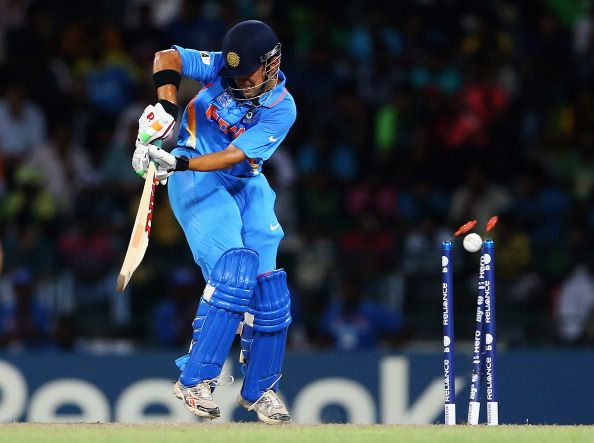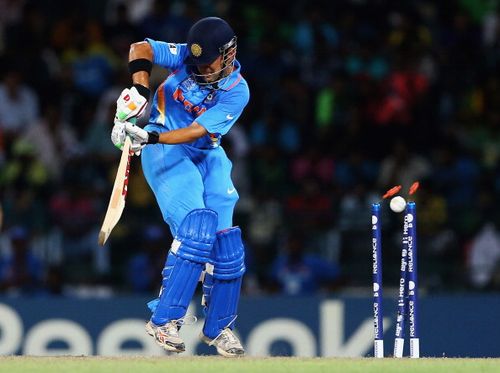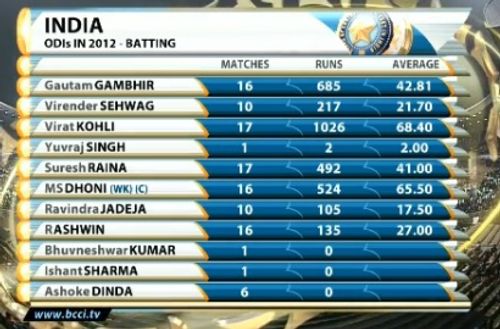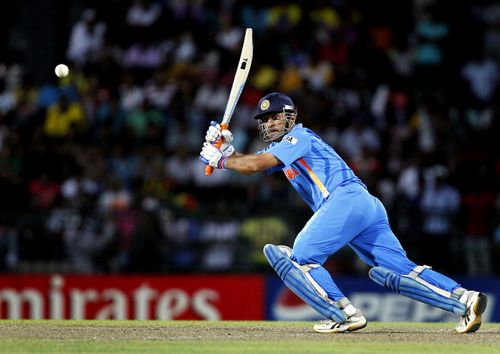
Woes with the Willow - The tale of Indian cricket

What’s new about a New Year? New dreams, new hopes, new aspirations, new challenges? However, if you’re a part of the Indian cricket team, nothing much is new. The calendar may have flipped a new page but MSD’s men are still stuck in the same hole. With the series loss against Pakistan, finally, all the myths surrounding Indian cricket have been busted. The labels of “Tigers at home”, “the Best batting line up” and “Best players of spin” have fallen off the wall as badly glued old stickers. If the Angrez bajaoed India’s band loud and hard, Pakistan walked all over Men in Blue in this bilateral series. With a superior bowling attack, a much improved batting order and a surprisingly sprightly fielding unit, Pakistan has outplayed India in all quarters.
India, on the other hand, seems to be trapped in denial mode. Instead of finding answers to the already burning questions, we’ve managed to raise a few more. After the drubbing against England at home, big heads were expected to roll and the biggest one did – Sachin Tendulkar hung up his boots in the limited overs format. Was this the change that Indian cricket needed? Maybe, maybe not. But it did act as a perfect shield for a few – Duncan Fletcher and the Indian selectors, to name a few – and, of course, it acted as a career-saver for the Delhi duo perched at the top of the Indian batting order.
Sachin Tendulkar retired to allow “young talent” to prosper and get the necessary exposure for India’s World Cup defence in 2015. However, except Bhuvneswar Kumar, not many youngsters were handed the India cap. Manoj Tiwary again injured himself at the wrong time, Ajinkya Rahane remained glued to the bench, Rohit Sharma was at his disappointing best and Ambati Rayudu didn’t even make a 12th man appearance.
India has always been a “batting” nation and we have always boasted about our prowess with the willow. The bowlers were made the scapegoats for every loss while the batsmen enjoyed the benefit of the doubt! But the beginning of the New Year has sent a shudder down India’s much flaunted batting order. After England tormented us with the “Son of Sardar”, Pakistan unleashed a deadly duo of left-armers. In both the ODIs, they swung the ball both ways and the top order crumbled, with Dhoni left stranded at the non-striker’s end. If Chennai saw a mind-boggling collapse, Kolkata witnessed a gradual disintegration.

But is India’s batting so brittle? The answer’s NO, if you look at the stats. If stats are to be believed, in 2012 ODIs, the Indian top order has been more than healthy in its performance. Kohli and Dhoni average over 60 while Gambhir and Raina sit pretty with 40 plus averages. Ashwin averages a healthy 27 for a number 8 with Sehwag being the only major disappointment.
So what led to this disaster against Pakistan?
First, the shot selection. With the Indian batting, it’s a classic case of too many, too early. A fifty-over game is actually longer than what we think. Even in T20 cricket, one has enough opportunity to be precise with one’s shot-making. The Indian batsmen, however, have been frivolous in this aspect of their game and expectantly have misfired. While Gambhir still persists with his dabs to third man, Sehwag simply refuses to believe that every ball can’t be hit for a boundary. Yuvraj Singh seems lost as soon as the match rolls beyond 20 overs and Raina is still obsessed with his love with the cow corner. The heaves on the leg side look spectacular when they come off but have ugly and disastrous repercussions when they don’t. Virat Kohli’s purple patch is also gradually fading. The flirts outside the off stump aren’t flying off to the boundaries and the incoming deliveries are hitting the timber more than the middle of the bat.
The game in Chennai was a display of appalling shot selection. The ball kept swinging in and the batsmen kept prodding with hard hands instead of playing close to the body. That can happen in a game, but with the Indian team, none of the batsmen seem to be interested in learning from their mistakes. Sehwag keeps making room and trying to slap every ball to the boundary, Gambhir keeps dragging on wide deliveries, while Kohli, Yuvraj and Raina hopelessly try to find some hidden treasure lodged behind the mid-wicket fence.
Secondly, batting is more about application than technique. One should have the will to stay on and place a price on his wicket. Application is the most important aspect for a cricketer and the biggest drawback of this Indian team. One may be blessed with all the shots in the book and equipped with the best technique, but without grit and determination, all the skill and the flamboyance fall flat on their face. For example, in Chennai, with the team reeling at 29/5, a “technically challenged” man walked in on a track that was doing a “bit”. With half his side cooling their heels in the hut, he decided to fight on against the swinging ball, pressure, humidity and a seven foot someone. The result – a miraculous recovery for India, and an escape from utter humiliation.

None in the top order, unlike the Indian captain, felt the necessity of tightening up their game under trying conditions. None of them seemed to have enough patience to see off the opening burst. The bat speeds weren’t regulated, the feet didn’t move and no one had the fire in the belly to take the fight to the next round.
And thirdly, let’s stop playing Sri Lanka for a while. The placid tracks and the feeble attack of our island neighbours have pampered the Indian batsmen to such a limit that they are even struggling to cope with home conditions.
We may poke fun at Rohit Sharma and ridicule Ravindra Jadeja, but this Indian team, collectively, is a bunch of underachievers who, due to lack of application, have fallen short of living up to their true potential. Failure is reality but the zeal to overcome failure is what leads one on the path to success. This team has ticked off the talent box but there are big question marks against the temperament one.
Times are tough for Indian cricket. Legends have bowed out and it will take time to get back on firmer grounds. Severe blows will be delivered and the team has to take them and keep moving. We’ve hit the other end of the curve and speeding down real fast. The wheels are coming off and things are falling apart rather quickly. But then again, maybe this is what was required to shake up Indian cricket. Maybe this was necessary to create a new team, a new set of heroes and clear out the decade long clogs, because after all….
“Sometimes things fall apart so that better things can fall together”